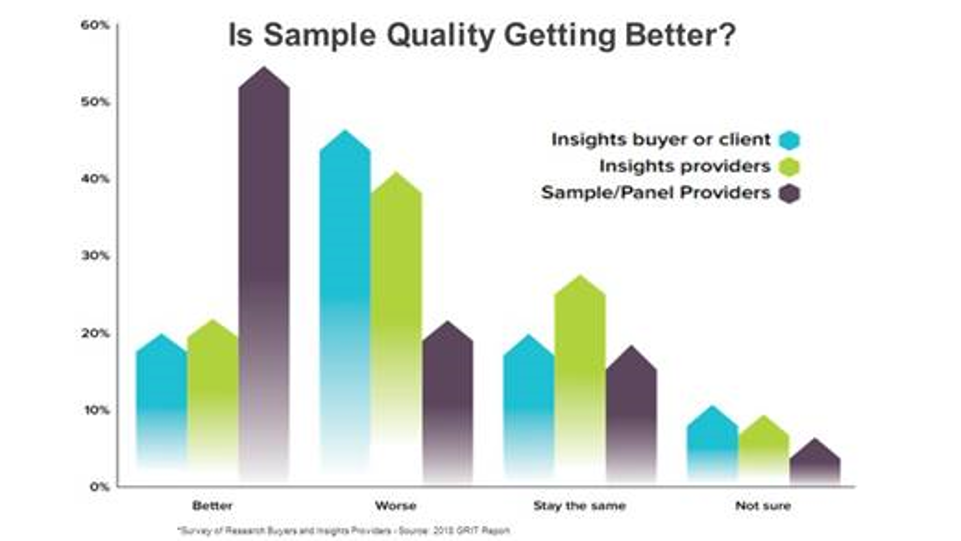
Intellicast S3E7 – Ted Pulsifer, Carlos Dreyfus, and a Market Research New Round-Up
February 17, 2020
Intellicast S3E8 – Jeremy Zogby of John Zogby Strategies
February 24, 2020At many research conferences for the past few years, we’ve had various discussions surrounding the quality of data. It’s not a surprise to anyone that ensuring sample quality has been a challenge for quite a while. I often present the results below from the GRIT report among researchers that clearly displays that Insights Buyers feel sample quality is getting worse, while panel providers feel it’s improving. There has always been a disconnect between these two groups.

However, with recent news, it’s clear now just how much money has been invested in improving sample quality. Just a couple of years ago, the only real options were True Sample or Imperium (now since merged into one company); now a wide variety of options have emerged. Many sample companies are offering their proprietary dashboard to other sample companies. Many, if not most, companies are using solutions from the ad tech world to help stop fraudulent activity and limit bots. Recently, numerous new entrants to the space have emerged, some from other industries, including helping reduce fraudulent activity in banking or specifically designed with survey research in mind. Many are using crowdsourcing, sharing across clients so that if one client blocks a poor respondent, I can also stop it from entering my survey. Most are using some form of artificial intelligence and machine learning. Blockchain technology is helping drive new forms of verification of respondents to ensure we’re surveying a real human being.
This is creating a new industry challenge – which of these companies will emerge as the best? What is the ideal solution? Will we share best practices and learnings with each other to help lift the entire survey research industry up? It may be some time before many of these questions are answered, but every sample provider is investigating and testing new options.
However, there are many ways quality can be improved without much of the technology listed above, primarily improving the respondent experience:
- Ensuring all studies are mobile-first, not simply mobile-friendly. The first device that should be checked when programming a survey is a smartphone. While we’ve been saying this for years, unfortunately, many surveys are still not mobile-friendly.
- Reducing survey length – this is another topic we’ve been speaking about for many years, but surveys should not be longer than 10-15 minutes.
- Ensuring proper screeners and questionnaires – test your survey. Have others test your survey to ensure we’re asking questions correctly and all surveys have proper survey design.
- Let’s improve technology to ensure we’re not asking the same (typically demographic) questions repeatedly. While technology can be a great help in targeting, it should also be used to improve the respondent experience.
None of these ideas are unique, but much more attention needs to be given to each and every one of them. This industry can grow, and we can deliver improved insights!




